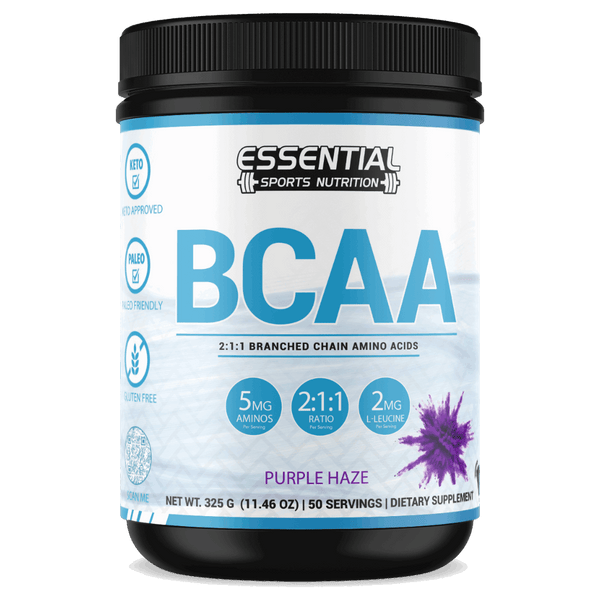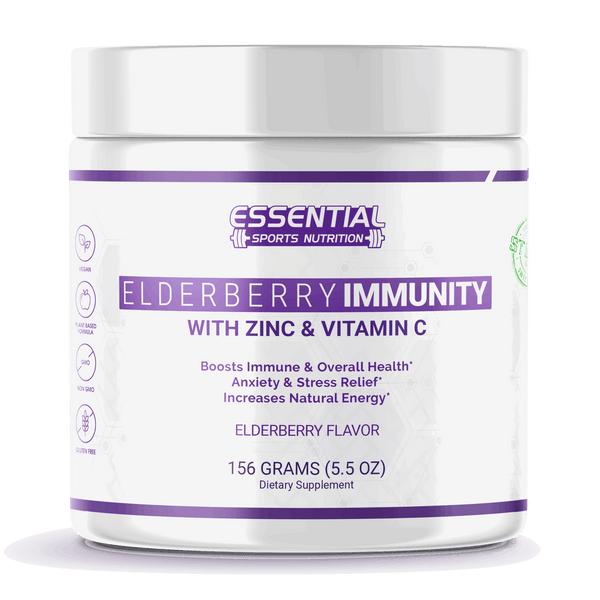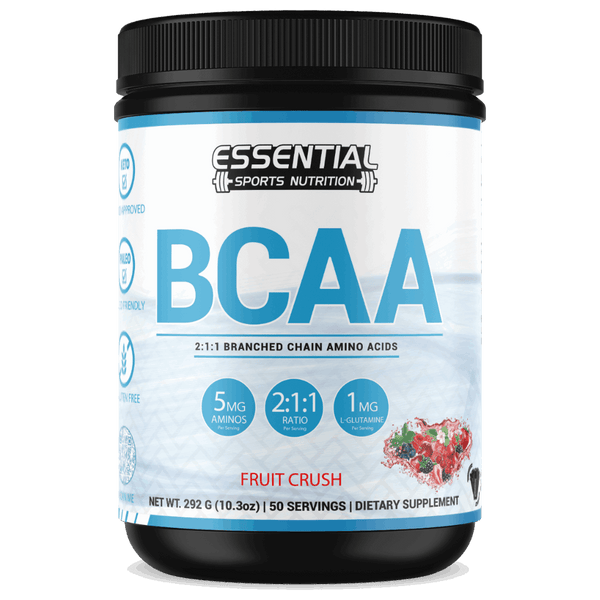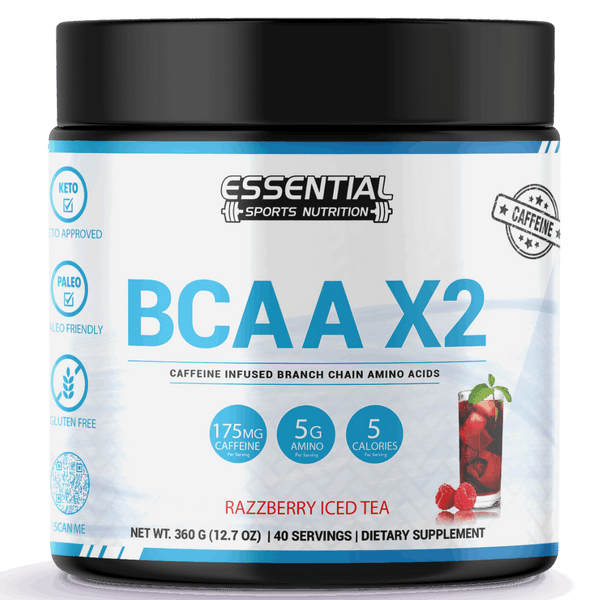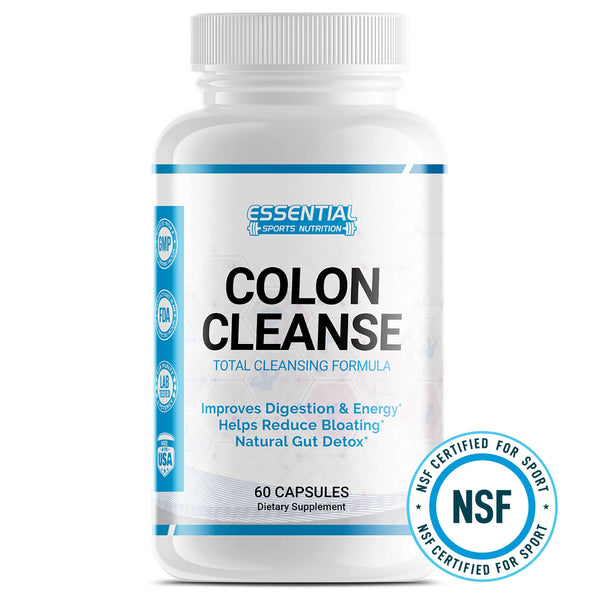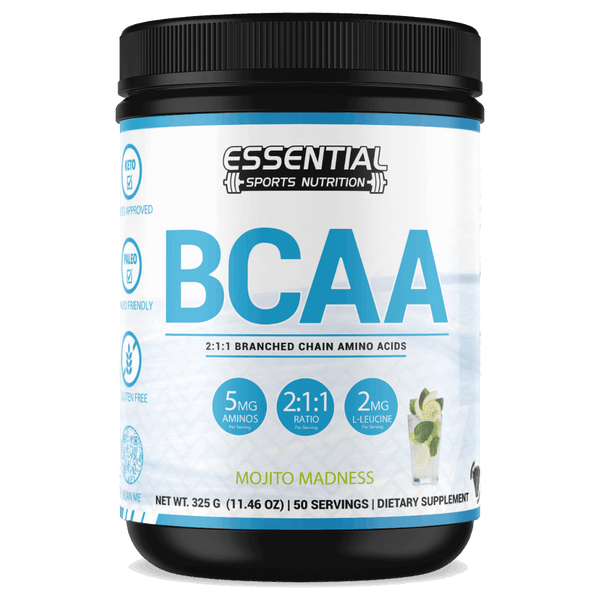Massage Benefits for Chronic Pain Relief: Results that Last
Have you ever considered the healing power of touch? For countless individuals wrestling with chronic pain, the search for relief can feel never-ending. Yet, nestled within the realm of natural remedies, massage benefits for chronic pain relief stand out as a beacon of hope. It's not just about feeling good in the moment; therapeutic massage offers a holistic approach to chronic pain relief with massage, addressing not just the physical symptoms but also fostering mental well-being.
Embracing a technique as ancient as human civilization itself, today's innovative massage therapies provide a gentle yet effective arsenal against the relentless discomfort of chronic conditions. If you're on a quest for natural pain relief through massage, you're joining a community who've found reprieve in the soothing, healing strokes that alleviate the deepest aches. Welcome to the world where hands carry the magic to not only comfort but also to restore.
Key Takeaways
-
Massages offer natural and holistic pain management for chronic conditions.
-
Therapeutic massage techniques can substantially reduce physical discomfort.
-
Regular massage therapy as part of pain care enhances both physical and mental health.
-
A personalized massage approach can align optimally with individual pain relief needs.
-
Integrating massage into daily life can provide significant long-term benefits for pain sufferers.
Understanding Chronic Pain and the Need for Relief
Chronic pain stands as a colossal challenge for millions of Americans, with its relentless persistence casting a shadow on everyday life. Recognizing its scale and searching for sustainable modes of pain management is more than necessary—it is a pressing healthcare priority.
The Prevalence of Chronic Pain in the U.S.
It's a sobering reality that a vast amount of the U.S. population suffers from chronic pain daily; a condition that continuously disrupts lives and burdens the healthcare system. From the aching lumbar regions characterized by low back pain to the piercing discomfort of neck pain, the spectrum of chronic pain conditions is broad and deep.
The Impact of Chronic Pain on Mental Health
Beyond the immediate physical discomfort, chronic pain often exerts profound mental effects. Trapped in a cycle of discomfort, many find themselves contending with heightened levels of anxiety and depression, making it clear that pain management must address both the mind and body.
Moving Beyond Medication: A Holistic Approach
As the tide shifts away from a sole reliance on medication, chronic pain sufferers are increasingly embracing holistic approaches like massage therapy. This shift is part of a comprehensive understanding that massages may be pivotal in managing relief and overall well-being.
| Chronic Pain Conditions | Physical Impacts | Psychological Impacts | Massage Therapy Benefits |
|---|---|---|---|
| Back Pain | Limited mobility, discomfort | Stress, mood swings | Reduces tension, promotes relaxation |
| Neck Pain | Reduced range of motion, headaches | Concentration difficulties | Alleviates muscle knots, improves circulation |
| Low Back Pain | Muscle spasms, acute pain | Lower quality of life, depression | Decreases inflammation, fosters healing |
The Science Behind the Effects of Massage Therapy on Pain Management

Exploring the science of massage therapy for chronic pain, it's evident that the benefits go beyond mere relaxation. Research substantiates that massage stimulates blood flow and disrupts pain signals, offering you a sanctuary from discomfort. The impact of various types of massage on the body's pain cycle is profound, leading to the reduction of inflammation and enhancing the secretion of endorphins to combat pain.
To better understand how massage for pain management works, consider the following table that elucidates the different responses elicited by particular types of massage:
| Type of Massage | Pain Signals Modulation | Endorphin Release | Anti-inflammatory Response |
|---|---|---|---|
| Swedish Massage | Increases circulation, easing pain signal intensity | High | Moderate |
| Deep Tissue Massage | Targets deep layers, altering pain pathways | Moderate | High |
| Shiatsu Massage | Uses pressure points to balance body's energy and reduce pain signals | Low | Moderate |
| Hot Stone Massage | Promotes deep muscle and tissue relaxation, dialing down pain signals | Moderate | High |
While every type of massage has its unique approach, they all share the ability to provide relief from chronic pain through their respective mechanisms. Finding the type that resonates with your body's needs to manage pain effectively is important. Remember, when pain signals diminish and endorphins rise, you step closer to reclaiming comfort and improving your quality of life.
Types of Massage Techniques Used for Chronic Pain Relief
Living with chronic pain can be a challenge, but finding solace in massage therapy might be the key to unlocking greater comfort and mobility. With a plethora of techniques at your disposal, selecting the proper massage for chronic pain management is crucial. Each methodology is designed with a particular focus that caters to various pain issues, ensuring you receive the personalized care you require for effective pain relief. Let's explore how specific massage techniques can help reduce pain and improve your quality of life.
Deep Tissue Massage: Reaching the Root of Pain
When the agonizing grip of chronic pain seems unyielding, deep tissue massage steps in as a stalwart ally. This technique is all about accessing the deeper layers of muscle and connective tissue to untangle the web of tension. It's a preferred choice for those who endure lower back pain, providing a path to potentially lasting relief. However, it's important to communicate with your massage therapist to ensure that the pressure applied is adequate without pushing beyond your comfort limits.
Swedish Massage: Gentle Relief for Chronic Sufferers
If you find yourself sensitive to touch due to chronic pain, Swedish massage could offer a gentler respite. Characterized by its flowing, kneading strokes, this massage technique enhances relaxation and stimulates blood circulation. It has the duality of nurturing tender areas while still encouraging the body's healing processes, making it an attractive, non-invasive option for pain reduction.
Trigger Point Therapy: Unlocking Muscle Tension
Chronic pain often manifests as sharp, acute points within your muscles, known as trigger points. Trigger point therapy is akin to a targeted search and rescue mission, aiming to alleviate these sources of pain. This focused approach applies direct pressure to specified knots, offering a gateway to pain relief for those who've found themselves caught in a cycle of spasms and discomfort.
| Technique | Primary Focus | Benefits | Suitable For |
|---|---|---|---|
| Deep Tissue Massage | Deep layers of muscle and connective tissue | Releases chronic muscle tension | Lower back pain, stiff neck, sore shoulders |
| Swedish Massage | Overall relaxation and circulation | Reduces pain, enhances flexibility | People with heightened pain sensitivity |
| Trigger Point Therapy | Localized areas of muscle tension (knots) | Relieves localized pain, increases range of motion | Chronic pain from muscle overuse |
With these massage techniques for chronic pain relief in your arsenal, finding a respite from the relentless clutches of discomfort is a reality within reach. It’s essential to consult with a licensed massage therapist to discuss which massage modality can most effectively reduce pain and suit the unique contours of your condition. Together, you can construct a viable strategy for massage for chronic pain management and steer your way toward better days.
Real-Life Success Stories: Testimonials of Acute and Chronic Pain Relief

When it comes to understanding the benefits of massage for chronic pain sufferers, nothing is more persuasive than the real-life success stories of those who have found pain relief through massage therapy. These authentic experiences shine a light on the remarkable results of massage and the profound difference it can make in managing ongoing pain.
Imagine you're struggling with chronic back pain that restricts your daily activities and diminishes your quality of life. Now, visualize the transformative effect that receiving a massage for chronic pain can have, leading to a significant reduction in discomfort and an improved ability to function. This isn't just a hopeful scenario; it's the reality for many individuals who have decided to incorporate massage into their pain management regimen.
After years of coping with chronic pain, I never imagined something as soothing as a massage could offer such relief. It's rejuvenated not just my muscles, but my spirit too.
Below is a snapshot of case study reports reflecting the effectiveness of massage for people with chronic pain:
| Case | Type of Pain | Massage Technique Used | Results After Treatment |
|---|---|---|---|
| Case 1 | Lower Back Pain | Deep Tissue Massage | 50% reduction in pain over 4 weeks |
| Case 2 | Fibromyalgia | Swedish Massage | Improved sleep, reduced pain flare-ups |
| Case 3 | Osteoarthritis | Trigger Point Therapy | Enhanced mobility, 30% less pain |
| Case 4 | Chronic Headaches | Cranial-Sacral Therapy | Decreased headache frequency by 70% |
The data reveals a compelling narrative: massage therapy isn't just about relaxation; it's a strategic approach capable of delivering tangible relief to those burdened by chronic pain. Through personalized treatment, individuals regain a sense of control and optimism about their condition. The stories of their journeys are powerful testaments to the potential that lies in human touch and specialized care.
Massage Therapy as Part of a Comprehensive Pain Management Plan
When it comes to managing your chronic pain, it's essential to employ a multifaceted strategy that goes beyond standard medical treatments. Integrating massage therapy into your pain management plan can offer you the combined benefits of traditional and alternative practices to target both acute and chronic pain more effectively. Let's delve into how this integration can significantly enhance your quality of life and explore the variety of methods available.
Integrating Massage with Other Pain Relief Techniques
Embracing massage therapy as a component of chronic pain management means complementing existing treatments you may be undergoing. The integration of massage therapy with physical therapy, medication, and self-care practices creates a comprehensive approach that addresses the complexities of pain. This approach not only provides immediate relief through the use of massage therapy but also promotes long-term health benefits that can help manage pain in the future.
Personalizing Pain Management: Tailoring Massage to Individual Needs
One size does not fit all, especially when it comes to chronic pain management. Your pain is unique, and so should be the way you approach treating it. By using massage therapy, you have the flexibility to customize your sessions to address your specific pain concerns. Such personalized care, which takes into account the type, intensity, and location of your pain, ensures that you are not just receiving a massage but are actively engaging in a tailored therapeutic experience for optimal outcomes.
| Treatment Method | Primary Benefits | Integration with Massage Therapy |
|---|---|---|
| Physical Therapy | Improves mobility, strengthens muscles | Enhances recovery, reduces muscle tension before and after sessions |
| Medication | Provides immediate pain relief, reduces inflammation | Complements medicinal effects with long-term muscle relaxation |
| Self-care Practices | Encourages relaxation, improves mental health | Massage reinforces stress reduction, aids in holistic well-being |
In conclusion, when you integrate massage therapy into your chronic pain management plan, you empower yourself to take control of your discomfort. By not just using massage therapy, but integrating and tailoring its application to fit your needs, you unlock the door to a more pain-free life. Remember, you have the option to choose massage as a pivotal element in your journey towards lasting pain relief.
How to Choose the Right Massage Therapist and Technique for You

Embarking on a journey to relieve chronic pain can lead you down various paths, but one of the most personal and integral decisions you'll make is selecting the right massage therapist. Understanding what to look for in a therapist and how to communicate your pain effectively can significantly improve your ability to achieve long-term pain relief. Let's consider the steps you need to take to ensure your chronic pain management is in the most capable hands.
Evaluating Qualifications and Experience
When you arrange a massage, one of the first aspects to assess is your therapist's qualifications and experience. A proficient therapist can offer a wealth of massage benefits for long-term pain relief, but they need the right blend of education and practical expertise. Below is a table comparing important factors to consider when evaluating potential therapists.
| Certification | Years of Experience | Specialization | Client Reviews |
|---|---|---|---|
| State licensure and accredited certifications | Range from recent graduates to seasoned professionals | Expertise in managing massage for chronic conditions | Positive feedback from clients with similar pain issues |
| Continuing education in pain management | Consistent practice, particularly in relevant pain treatments | Additional training in specific modalities like deep tissue or trigger point therapy | Demonstration of empathy and understanding of chronic pain |
Communicating Your Pain and Concerns Effectively
Finding a skilled massage therapist is crucial, but equally important is your ability to express the nuances of your pain. By effectively communicating your concerns and expectations, you create an open dialogue that allows for a more personalized and therapeutic experience. Make sure to discuss the following:
-
The history of your condition and any known triggers of pain
-
The intensity and frequency of your discomfort
-
Previous therapies and their outcomes
-
Your goals for the therapy session and overall pain management plan
By advocating for your needs and maintaining transparent communication, you enhance the potential to relieve chronic pain and foster an environment conducive to healing. Remember, the more information your therapist has, the better they can tailor the session to provide the massage benefits for long-term pain relief that you seek.
Navigating the Challenges: When Massage Therapy Isn’t Enough

While the benefit from massage therapy is evident for many who treat chronic pain, it's not a universal remedy. You may find that despite regular massage intervention, the reduction in pain you seek is not fully realized. This is not to say that massage can't help; rather, it may be one piece of a more complex puzzle to manage and alleviate your discomfort.
Understanding that massage can help with certain facets of pain, like tension and stress-related soreness, is important, but so is recognizing its limitations. If you're experiencing pain with massage or only minimal relief, it's crucial to consider other options in conjunction with your healthcare provider's advice.
Alternate avenues might include:
-
Physical therapy to increase strength and mobility
-
Acupuncture for an alternative approach to pain relief
-
Cognitive-behavioral therapy to address the mental aspects of chronic pain
-
Medical treatments such as pain relievers or anti-inflammatory medications
Each individual's experience with chronic pain is unique, and consequently, so should be their treatment plan. Being open to modifying your approach and incorporating multiple strategies can be the key to finding relief.
Remember, the journey to managing chronic pain is often a marathon, not a sprint. It's crucial to remain patient and persistent, working in tandem with professionals who can guide you toward therapies and solutions that address your specific pain experiences. Think of massage intervention as one tool in your arsenal, one that can be highly effective for certain issues but may need to be supplemented with other methods for the best results.
Finding the right balance of treatments can be challenging, but it's also a path many have walked before you. I encourage you to take advantage of the vast resources available and remember that while massage provides numerous health benefits, it's most effective when part of a broader, personalized pain management approach. So explore, communicate with your caregivers, and never hesitate to seek a second opinion if you're not seeing the results you need from your current strategy.
Pain Relief Beyond the Session: Post-Massage Practices to Maintain Benefits

While massage therapy helps to provide immediate relief, incorporating certain practices after your session can extend the effect on pain. You play an essential role in maintaining the benefits of massage, and with a few simple post-massage exercises and lifestyle adjustments, you can continue to experience the pain helps well after leaving the massage therapist's table.
Exercises and Stretches to Enhance Massage Effects
Consistent exercises during massage and after can prevent the tension in your muscles from returning prematurely. Focus on stretches that target the areas where you carry most of your stress. For instance, if you're dealing with neck pain, gentle neck rolls and shoulder shrugs can be beneficial. Here's a basic outline of exercises to incorporate:
-
Neck Rolls: Slowly roll your head in a circular motion to ease neck tension.
-
Shoulder Shrugs: Lift your shoulders towards your ears and release to relieve shoulder stress.
-
Arm Stretches: Stretch your arms above your head or across your body to maintain upper body mobility.
-
Back Twists: Seated or standing, gently twist your torso from side to side, holding for a few seconds on each side.
-
Leg Stretches: Use a chair or wall for support and stretch your legs to release tightness in the hamstrings and calves.
Lifestyle Adjustments to Support Long-Term Pain Relief
Making small changes to your lifestyle can significantly impact your journey towards long-term pain management. Integrate ergonomic adjustments at your workspace to reduce strain, practice stress management techniques like mindfulness or meditation, and consider anti-inflammatory foods to support your body's natural healing process. Below you'll find a table that breaks down these lifestyle adjustments:
| Lifestyle Aspect | Adjustments | Benefits |
|---|---|---|
| Ergonomics | Adjust computer height, use supportive seating | Reduces strain on back, neck, and eyes |
| Stress Management | Daily mindfulness practice, regular breaks | Decreases muscle tension, enhances mental clarity |
| Diet | Incorporate omega-3s, turmeric, ginger | Supports inflammation reduction, promotes recovery |
| Sleep Hygiene | Create a calming bedtime routine, maintain a sleep schedule | Facilitates muscle recovery, improves pain threshold |
Maintaining benefits of massage through these post-session activities empowers you to take an active role in your health, enabling a stronger, more resilient body capable of better handling day-to-day stressors. Remember that a proactive approach to wellness through lifestyle and massage synergy can be your best defense against chronic pain.
Benefits of Massages for Chronic Pain Relief

Exploring the intersection of comfort and healing, massage therapy stands out as a beacon of relief for those battling the relentless waves of chronic pain. As your journey to wellness unfolds, consider the myriad of massage benefits that could transform your life.
Long-established as a cornerstone of non-pharmacological pain management, massage therapy weaves through the complex fabric of pain relief strategies, providing solace to tensed muscles and overwrought minds. Let's delve into the holistic embrace that massage offers, ensuring every touch carries the potential to usher in a new chapter of well-being for chronic pain sufferers.
-
Alleviates deep-seated tension and pain in muscles and joints
-
Stimulates endorphin release, your body's natural painkillers
-
Enhances circulation, fostering nutrient-rich blood flow to afflicted areas
-
Encourages relaxation, offering a reprieve from the mental stressors of chronic pain
-
Promotes better sleep, crucial for healing and pain management
-
Supports immune system function, integral to overall health and recovery
-
Improves range of motion and flexibility, contributing to daily functional improvements
-
Acts as a supportive therapy that can be tailored to your unique pain profile
-
Encourages a mindful connection with your body, enhancing awareness and self-care
-
Serves as a complementary treatment that works harmoniously with other modalities
By embracing massage as part of your chronic pain management plan, you tap into an ancient yet ever-evolving form of healing. This touch-based therapy not only addresses the physical manifestations of pain but also promotes a state of mental tranquility where the body can find balance and begin to heal.
"Massage therapy - a healing touch that not only dissipates pain but also rekindles the joy of movement, making each day a celebration of newfound freedom."
Remember, your path to chronic pain relief is a personal one, and integrating massage therapy could be the key to unlocking a more vibrant, pain-free life. It’s time to reclaim your comfort, one soothing stroke at a time.
Conclusion

As we evaluate the evolving landscape of chronic pain management, the future of massage therapy harbors both innovation and traditional wisdom. Incorporating massage into pain management strategies is not merely about temporary relief; it's about building a foundation for lasting well-being. The fusion of cutting-edge research and holistic practices is poised to elevate the role of massage in therapeutic healing and offer renewed hope to those seeking respite from persistent pain.
A Look at the Future of Massage for Chronic Pain Management
Looking ahead, the trajectory of massage therapy is marked by exciting prospects. With novel massage techniques surfacing and more comprehensive studies underway, the potential of massage for pain management only strengthens. This ongoing advancement, supported by a deeper understanding of pain mechanisms, ensures that therapeutic massage will continue to be a pivotal element in the relief and recovery process for chronic pain sufferers.
Empowering Individuals to Take Control of Their Pain Relief Journey
In parallel with these advancements, there's a push towards empowering pain management. You have the ability to gain greater autonomy in your journey to control pain relief. Education and accessible information on using massage for pain management empower you to make crucial decisions about your health. Such self-determined paths not only boost confidence in managing pain but also instill a sense of responsibility for personal health and wellness that transcends the massage table. Your active role is instrumental in shaping a future where chronic pain is a manageable aspect of life, with massage therapy as your steadfast ally.
Massages to Relieve Pain FAQs
Q: What is massage therapy?
A: Massage therapy is a hands-on technique that involves applying pressure, motion, and vibration to the soft tissues of the body. It is commonly used for relaxation and to relieve muscle tension, but it can also provide numerous health benefits, including chronic pain relief.
Q: How can massage help with chronic pain?
A: Massage can help with chronic pain by relaxing tense muscles, improving blood circulation, and stimulating the release of endorphins, which are natural pain relievers produced by the body. It can also help reduce inflammation and improve flexibility, leading to a decrease in pain levels over time.
Q: What types of massage are commonly used for chronic pain?
A: There are several types of massage that can be beneficial for chronic pain relief. Some popular options include Swedish massage, deep tissue massage, trigger point therapy, and myofascial release. The specific type of massage recommended will depend on the individual's condition and preferences.
Q: How often should I receive a massage for chronic pain?
A: The frequency of massage sessions for chronic pain will vary depending on the severity of the pain and the individual's response to treatment. In general, it is recommended to start with weekly or bi-weekly sessions and gradually adjust the frequency based on the results achieved.
Q: What are the benefits of receiving a massage for chronic pain?
A: Regular massages for chronic pain can provide a range of benefits, including reduced muscle tension, improved range of motion, increased relaxation, enhanced mood, and improved sleep. Additionally, massage therapy can help in the management of stress and anxiety, which often accompany chronic pain conditions.
Q: Can I use massage therapy as part of my overall pain management plan?
A: Yes, massage therapy can be a valuable component of an overall pain management plan. It can complement other treatments, such as medication, physical therapy, and lifestyle modifications, to provide comprehensive relief and improve the quality of life for individuals with chronic pain.
Q: Is massage effective for both acute and chronic pain?
A: While massage can be effective for both acute and chronic pain, its benefits are typically more noticeable and pronounced in cases of chronic pain. Chronic pain conditions often involve ongoing muscle tension and inflammation, which can be effectively addressed through regular massage sessions.
Q: How can I arrange a massage for chronic pain relief?
A: To arrange a massage for chronic pain relief, you can start by finding a licensed massage therapist who specializes in pain management. They will be able to assess your condition and develop a personalized treatment plan. You can typically schedule appointments directly with the therapist or through a massage therapy clinic.
Q: What are the possible side effects of receiving a massage for chronic pain?
A: While massage therapy is generally safe, there are some potential side effects to be aware of. These can include temporary soreness, bruising, or slight discomfort during or after the massage. It is important to communicate with your massage therapist about any concerns or existing medical conditions before the session.
Q: Are there any contraindications for receiving a massage for chronic pain?
A: There are certain situations where massage therapy may not be recommended or require modifications. These can include acute injuries, severe osteoporosis, blood clotting disorders, open wounds or burns, and certain skin conditions. It is always best to consult with a healthcare professional before scheduling a massage if you have any specific concerns.



